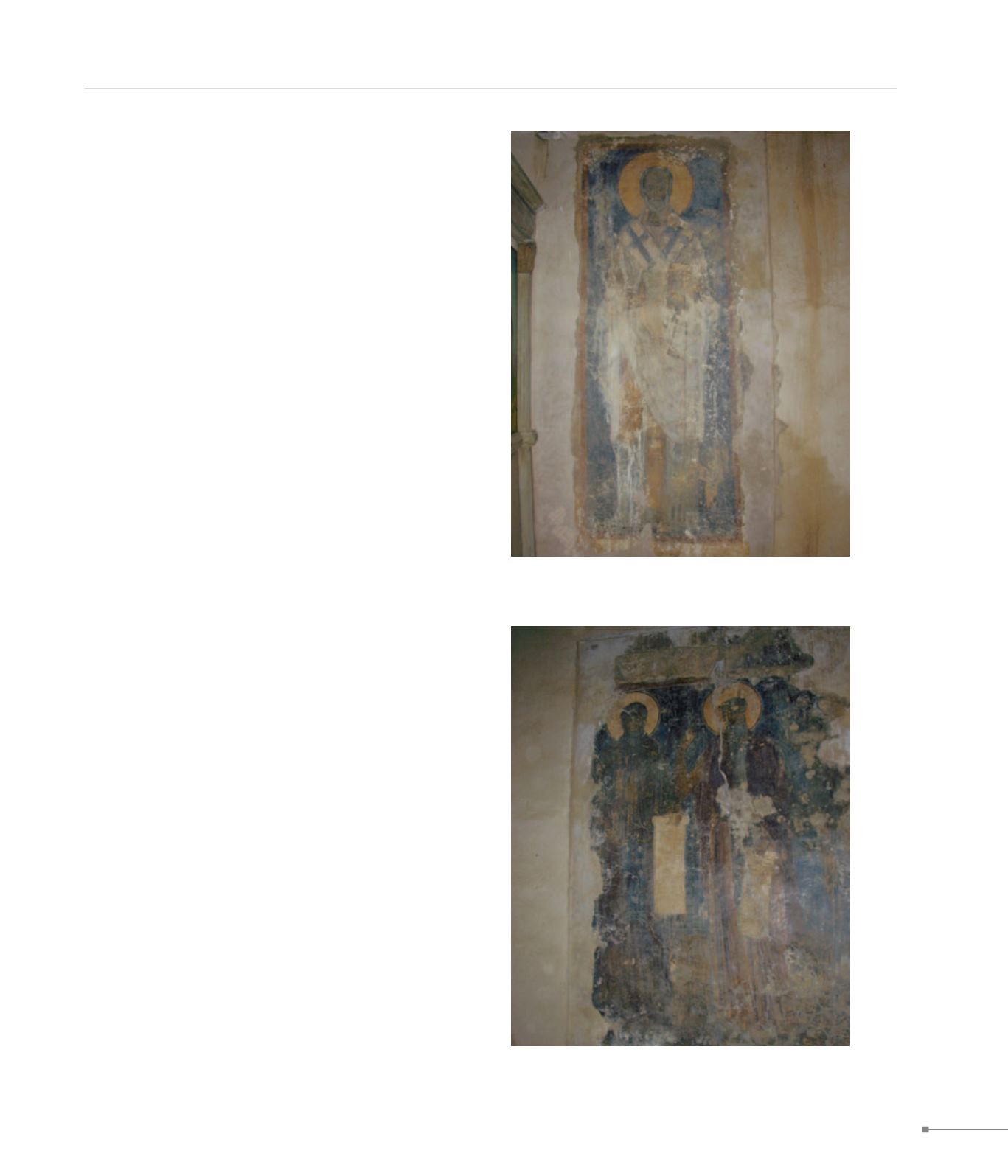
Chersonisos.
Potamies.
CRETE
281
485. Bizariano, Aghios Panteleimon, wall painting of the second phase
(Μπιζαριανώ, Άγιος Παντελεήμονας, τοιχογραφία β’ φάσης)
485. Bizariano, Aghios Panteleimon, wall painting of the first phase
(Μπιζαριανώ, Άγιος Παντελεήμονας, τοιχογραφία α’ φασης)
seems that it was inhabited in the second Byzantine period,
after 961, when the current village of Xydas developed there.
Aghios Panteleimon at Bizariano is a large, three-aisled, origi-
nally timber-roofed basilica of the 11th c. The pointed barrel
vaults of the aisles date from the period of Venetian rule. The
external façade of the S wall features blind arcades and parts
of Byzantine reliefs and Hellenistic inscriptions embedded in
the walls as decorations. The construction of the E column of
the S colonnade with the superposed Corinthian capitals is
unique in Crete. In the interior are wall-paintings from three
different eras and styles. In the conch of the bema are the re-
mains of frescoes and the inscription of the sponsor, Georgios
Ploumides, dating from the 13th c. The remnants of Saint John
Prodromos’ depiction in the S conch and the full-body wall-
painting of Saint Nicholas in the S wall are dated to the 11th c.
Further to the W on the same wall remain figures of the 12th
c. Another series of saints on the N wall displays the archaic
features of the first half of the 13th c.
486.
Chersonisos.
At the sites of Kastri and Piskopiana two three-aisled Early
Christian basilicas with parts of mosaic floors (5th-6th c.) have
been discovered. Rescue excavations have yielded numer-
ous remnants of basilicas, Early Christian graves, and mosaic
floors of the Late Roman and Early Christian periods.
487.
Potamies.
The barrel-vaulted church of Christ is totally covered with very
well-executed frescoes of the eighth decade of the 14th c. The
depiction of the half-body Pantokrator in the conch, instead of
Panagia Platytera, is a feature of iconographic arrangement in
small Cretan churches without a dome. Panagia Gouverniotis-
sa is among the very few Cretan churches from the period of
Venetian occupation following the free cross plan with dome.
Its extensive iconographical programme is in good condition.
It is a high-standard Palaeologan-style ensemble of the early
14th c., one of the most significant in Crete.


